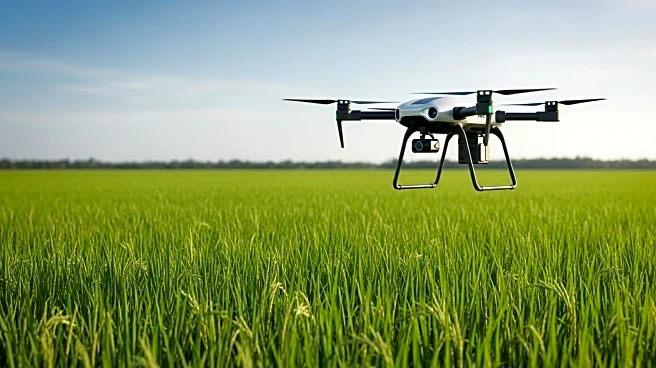Rapid Read • 8 min read
The GEE-MEGAN model has been developed to improve the accuracy of biogenic volatile organic compound (BVOC) emissions predictions in human-disturbed forest edges and urban areas. This model utilizes high-resolution Landsat data for leaf area index (LAI) estimation, outperforming conventional approaches that rely on coarser datasets like MODIS. GEE-MEGAN has shown significant improvements in estimating BVOC emissions, particularly in regions with dynamic canopy changes. It captures greater spatial heterogeneity in emissions, especially at forest edges affected by human activities, and provides high-resolution modeling in urban areas. The model has demonstrated its ability to produce more accurate emission estimates compared to traditional models, which often fail to account for critical impacts of forest loss and urban vegetation patterns.
AD
The development of GEE-MEGAN is significant as it offers a more precise understanding of BVOC emissions, which play a crucial role in atmospheric chemistry and climate dynamics. Accurate modeling of these emissions is essential for assessing their impact on air quality, ozone formation, and climate change. By providing high-resolution emission estimates, GEE-MEGAN helps refine climate predictions and supports urban planning initiatives aimed at improving air quality and mitigating climate impacts. This model can aid in the development of climate resilience strategies, such as urban greening and afforestation, ensuring that these efforts balance environmental benefits with minimizing BVOC-related warming and pollution.
GEE-MEGAN's advancements suggest potential for further refinement by integrating complex environmental factors influencing BVOC emissions, such as soil moisture and biotic stresses. Incorporating high-resolution meteorological data or AI-driven weather prediction models could enhance its capacity to simulate urban-scale processes. This model sets a benchmark in biosphere-atmosphere interaction modeling, providing actionable insights for sustainable urban planning and climate mitigation. Future developments may focus on expanding its applicability and precision in diverse environments, enhancing its role in addressing air quality and climate challenges.
GEE-MEGAN's ability to capture emissions at finer spatial scales offers deeper insights into the interactions between biogenic and anthropogenic sources in urban areas. This capability is crucial for evaluating the roles of biogenic emissions in air pollution, including ozone and secondary organic aerosol formation. By resolving emissions down to the street and community level, GEE-MEGAN supports adaptive air-quality management in response to events like heat waves or rapid urbanization, maximizing environmental benefits while minimizing unintended pollution consequences.
AD
More Stories You Might Enjoy










